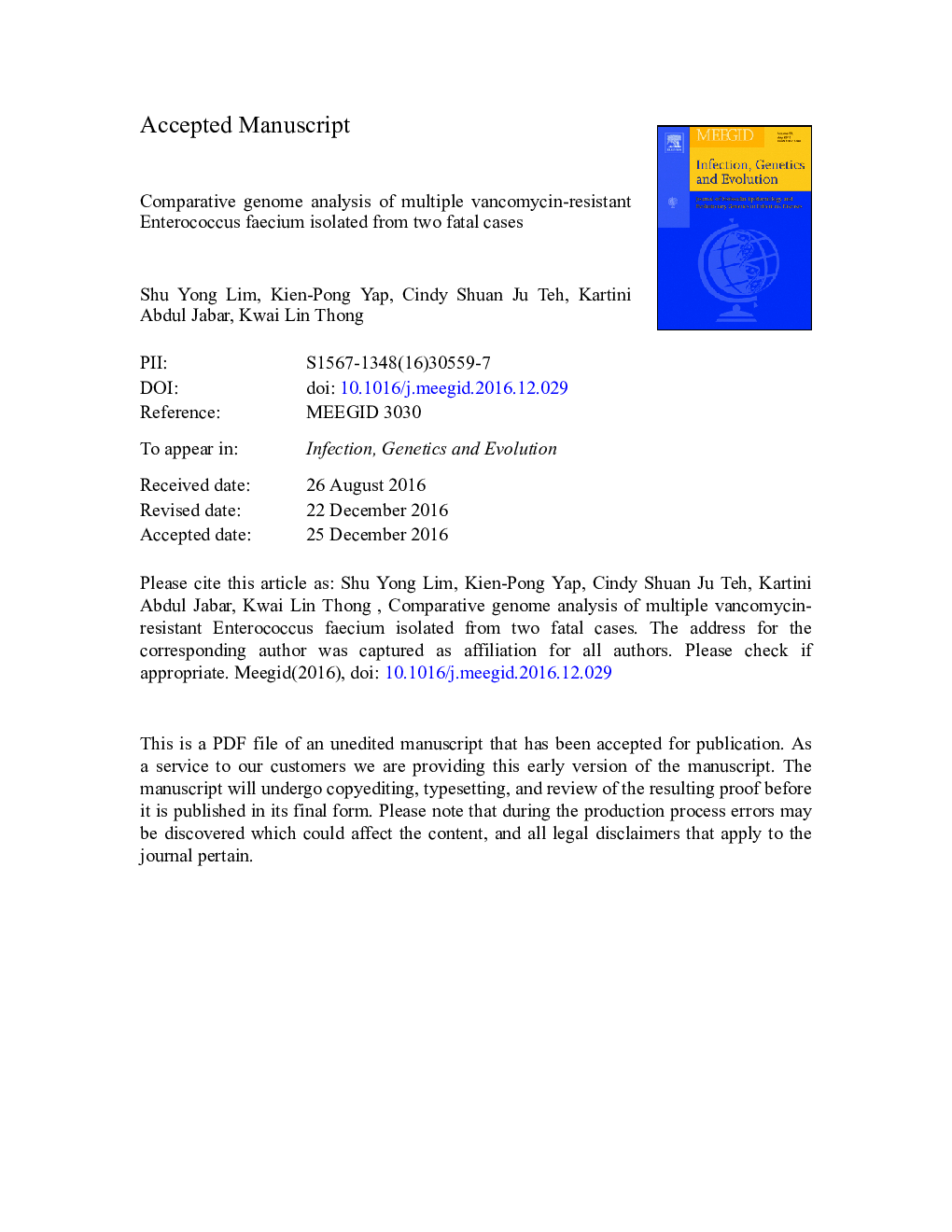| Article ID | Journal | Published Year | Pages | File Type |
|---|---|---|---|---|
| 5590613 | Infection, Genetics and Evolution | 2017 | 53 Pages |
Abstract
Enterococcus faecium is both a commensal of the human intestinal tract and an opportunistic pathogen. The increasing incidence of enterococcal infections is mainly due to the ability of this organism to develop resistance to multiple antibiotics, including vancomycin. The aim of this study was to perform comparative genome analyses on four vancomycin-resistant Enterococcus faecium (VREfm) strains isolated from two fatal cases in a tertiary hospital in Malaysia. Two sequence types, ST80 and ST203, were identified which belong to the clinically important clonal complex (CC) 17. This is the first report on the emergence of ST80 strains in Malaysia. Three of the studied strains (VREr5, VREr6, VREr7) were each isolated from different body sites of a single patient (patient Y) and had different PFGE patterns. While VREr6 and VREr7 were phenotypically and genotypically similar, the initial isolate, VREr5, was found to be more similar to VRE2 isolated from another patient (patient X), in terms of the genome contents, sequence types and phylogenomic relationship. Both the clinical records and genome sequence data suggested that patient Y was infected by multiple strains from different clones and the strain that infected patient Y could have derived from the same clone from patient X. These multidrug resistant strains harbored a number of virulence genes such as the epa locus and pilus-associated genes which could enhance their persistence. Apart from that, a homolog of E. faecalis bee locus was identified in VREr5 which might be involved in biofilm formation. Overall, our comparative genomic analyses had provided insight into the genetic relatedness, as well as the virulence potential, of the four clinical strains.
Keywords
Related Topics
Life Sciences
Agricultural and Biological Sciences
Ecology, Evolution, Behavior and Systematics
Authors
Shu Yong Lim, Kien-Pong Yap, Cindy Shuan Ju Teh, Kartini Abdul Jabar, Kwai Lin Thong,
